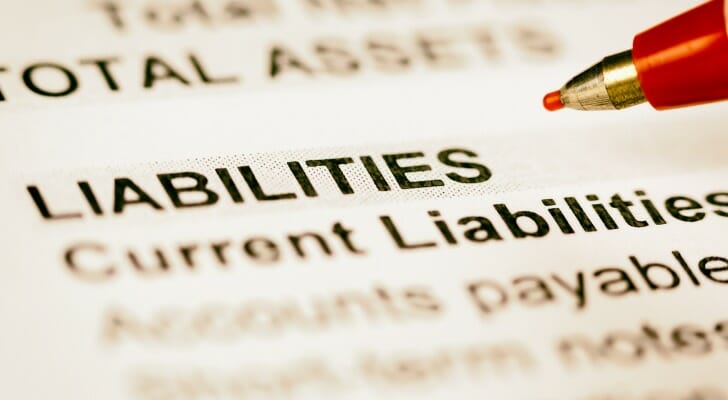 Current liabilities are short-term business debts that are due to be paid before the end of the current fiscal year. These upcoming charges are reported on a company’s balance sheet. Current liabilities include obligations such as accounts payable and amounts due to suppliers, employee wages and payroll tax withholding. Because they describe upcoming requirements that the company’s financial resources will have to fulfill, balance sheet figures for current liabilities draw close attention from business managers, creditors and investors. Consider working with a financial advisors as you seek to boost your understanding of various key metrics.
Current liabilities are short-term business debts that are due to be paid before the end of the current fiscal year. These upcoming charges are reported on a company’s balance sheet. Current liabilities include obligations such as accounts payable and amounts due to suppliers, employee wages and payroll tax withholding. Because they describe upcoming requirements that the company’s financial resources will have to fulfill, balance sheet figures for current liabilities draw close attention from business managers, creditors and investors. Consider working with a financial advisors as you seek to boost your understanding of various key metrics.
Current Liabilities Defined
The simplest definition of current liabilities is any expense that must be paid during the current fiscal year. A more refined description is that current liabilities are bills that need to be settled during the current operating cycle. This recognizes that it takes longer than a year for some businesses to acquire materials and supplies, convert those into products, sell the products and collect the cash. Relatively few businesses have operating cycles of more than a year. However, they do exist. Agriculture-based businesses such as wineries and timber producers are examples.
Another refinement of the definition of current liabilities states that the obligations will be settled using current assets. Current assets are liquid assets that are likely to be converted to cash within a year. They include cash, accounts payable and negotiable securities. A short-term debt due this year that will be paid off by refinancing it with a long-term loan would, therefore, not be considered a current liability.
Current liabilities do, however, include obligations that will be paid by creating another current liability. For example, a business may settle a short-term loan by taking out another short-term loan.
Examples of Current Liabilities
 Current liabilities can encompass a variety of charges and obligations. Among amounts that may be included in current liabilities are rent and dividends. Long-term debts that are maturing during the current year are also included as current liabilities. The exception to this is when the debt will be settled by creating another long-term liability, such as a refinancing loan. Here are the most typical items included in current liabilities:
Current liabilities can encompass a variety of charges and obligations. Among amounts that may be included in current liabilities are rent and dividends. Long-term debts that are maturing during the current year are also included as current liabilities. The exception to this is when the debt will be settled by creating another long-term liability, such as a refinancing loan. Here are the most typical items included in current liabilities:
Accounts payable. These are debts owed to suppliers and vendors for inventory, materials, supplies and services. These debts are not always in the form of written agreements but are generally payable within 90 days or less.
Notes payable. These are more formal short-term debts with terms of less than a year such as bank loans and purchases of equipment on installment terms. The principal and interest portion of payment due on notes payable is included in current liabilities.
Accrued liabilities. These include items such as wages and salaries that have been earned by workers but not yet paid by the employer. Income taxes that are owed on business profits but won’t be paid until tax filing time are also included here.
Current long-term debt obligations. Debts with terms that go beyond a year, such as mortgages, are excluded from current liabilities and reported as long-term liabilities. However, the portion of the principal and accrued interest on long-term debts that is due to be paid within the current year is included in current liabilities.
Customer prepayments. Any amounts that customers have paid in advance for goods or services that have yet to be delivered are considered current liabilities. They may include, for instance, deposits, gift cards, subscriptions and tickets to future events. These amounts may be listed as unearned revenue on the balance sheet under the current liabilities header.
Collections for others. When businesses bring in money that will later be paid to another party, that creates a current liability. For example, sales taxes are collected at the time each sale is completed but remitted in a lump sum later to the collecting authority. These sales taxes are being collected for someone else and are considered current liabilities. Payroll withholding is another example of money collected for someone else, creating a current liability.
The Bottom Line
 Current liabilities include expenses that will be paid out of current assets during the current fiscal year or, for some companies, operating year. The current assets figure from a balance sheet can be an indicator of the company’s short-term financial health. Keep in mind that current liabilities only include amounts that have been incurred, not those that are expected to be incurred. For instance, wages employees will be paid next year are not part of current liabilities. Similarly, accrued liabilities don’t include taxes on income that is expected but has not yet been earned.
Current liabilities include expenses that will be paid out of current assets during the current fiscal year or, for some companies, operating year. The current assets figure from a balance sheet can be an indicator of the company’s short-term financial health. Keep in mind that current liabilities only include amounts that have been incurred, not those that are expected to be incurred. For instance, wages employees will be paid next year are not part of current liabilities. Similarly, accrued liabilities don’t include taxes on income that is expected but has not yet been earned.
Tips for Investing
- If you are a manager, investor or creditor evaluating a business by looking at its current liabilities, you may want to consider consulting with an experienced financial advisor. If you don’t have a financial advisor yet, finding one doesn’t have to be hard. SmartAsset’s free tool matches you with up to three vetted financial advisors who serve your area, and you can interview your advisor matches at no cost to decide which one is right for you. If you’re ready to find an advisor who can help you achieve your financial goals, get started now.
- Cash flow statements can be a useful way to get a feel for how a company is doing financially. If you run a business, it’s helpful to run cash flow statements regularly to track your progress and look for areas where you may need to adjust spending. If you’re an investor, cash flow statements serve as a guide when selecting companies to invest in.
Photo credit: ©iStock.com/Blue Planet Studio, ©iStock.com/fizkes, ©iStock.com/RapidEye